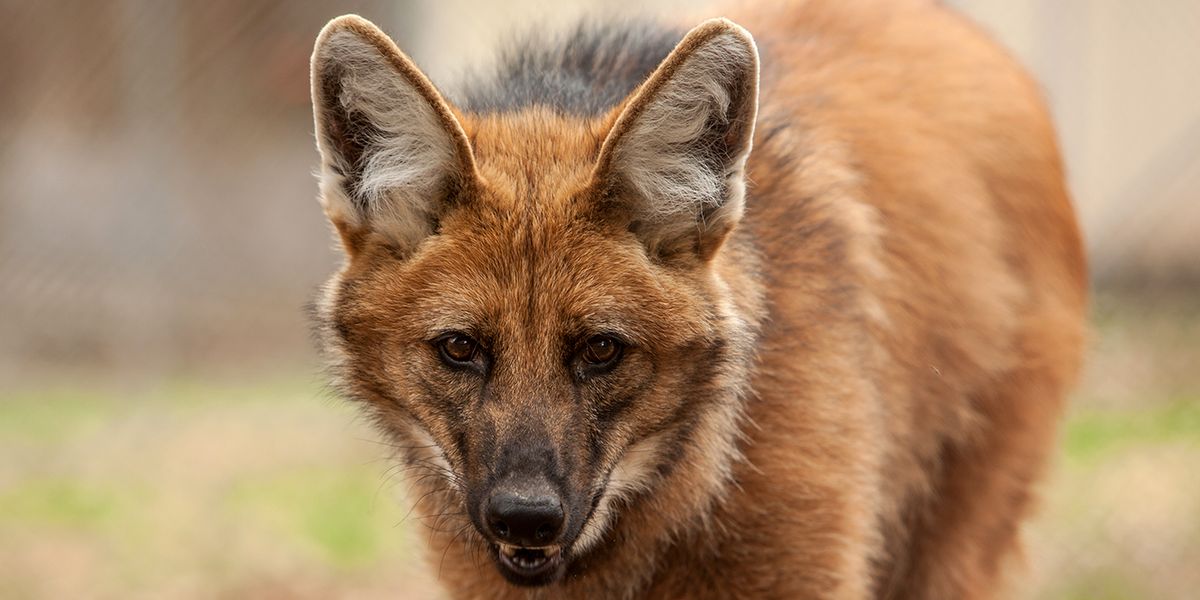
What is a Maned Wolf? The Maned Wolf is a unique creature that looks like a fox on stilts. Found in South America, this animal stands out with its long legs and reddish fur. Despite its name, it's not a wolf or a fox but belongs to its own genus, Chrysocyon. These animals are mostly solitary and communicate through scent markings and vocalizations. They have a varied diet, eating fruits, small mammals, and even insects. Known for their distinctive "roar-bark," they play a crucial role in their ecosystem by helping to disperse seeds. Curious to learn more? Let's dive into 25 fascinating facts about this remarkable animal!
The Unique Appearance of the Maned Wolf
The maned wolf is a fascinating creature with a distinct look that sets it apart from other canids. Let's dive into some interesting facts about its appearance.
-
Long Legs: The maned wolf has incredibly long legs, which help it see over tall grasses in its native habitat. These legs make it look more like a fox on stilts.
-
Red Fur: Its fur is a striking reddish-orange color, which provides excellent camouflage in the grasslands and savannas where it lives.
-
Black Mane: A distinctive black mane runs along its neck and back. This mane can be raised to make the wolf appear larger when threatened.
-
Large Ears: The maned wolf has large, pointed ears that can rotate to pick up sounds from all directions, aiding in hunting and avoiding predators.
-
White Tail Tip: The tip of its tail is white, which can be a signal to other maned wolves or a way to distract predators.
Habitat and Range
Understanding where the maned wolf lives helps us appreciate its adaptations and behaviors. Here are some key facts about its habitat and range.
-
South American Native: The maned wolf is native to South America, primarily found in Brazil, Paraguay, Argentina, Bolivia, and Peru.
-
Cerrado Biome: It thrives in the Cerrado, a vast tropical savanna ecoregion in Brazil, which is one of the most biodiverse regions in the world.
-
Grasslands and Savannas: Prefers open habitats like grasslands, savannas, and scrub forests, where its long legs are advantageous.
-
Territorial: Maned wolves are territorial animals, with individuals marking their territory with urine to ward off intruders.
-
Solitary Lifestyle: Unlike many other canids, maned wolves are solitary creatures, coming together only during the breeding season.
Diet and Hunting
The maned wolf has a varied diet and unique hunting strategies. Here are some fascinating facts about its eating habits.
-
Omnivorous Diet: Maned wolves are omnivores, eating a mix of fruits, vegetables, and small animals.
-
Lobos de Fruta: They are sometimes called "fruit wolves" because a significant portion of their diet consists of fruits, particularly the lobeira fruit.
-
Hunting Technique: They use a pouncing technique to catch small prey, similar to that of a fox.
-
Rodents and Birds: Their diet includes rodents, birds, and even fish, showcasing their adaptability.
-
Scavenging: Maned wolves are also known to scavenge, taking advantage of carrion when available.
Reproduction and Lifespan
Reproduction and lifespan are crucial aspects of any species' biology. Here are some key facts about the maned wolf's life cycle.
-
Breeding Season: The breeding season for maned wolves typically occurs between April and June.
-
Monogamous Pairs: They form monogamous pairs, with both parents involved in raising the young.
-
Gestation Period: The gestation period lasts about 60 to 65 days, resulting in a litter of 2 to 6 pups.
-
Pup Development: Pups are born blind and rely on their parents for food and protection until they are old enough to fend for themselves.
-
Lifespan: In the wild, maned wolves live around 12 to 15 years, though they can live longer in captivity.
Conservation Status
The maned wolf faces several threats in the wild, making conservation efforts crucial. Here are some important facts about its conservation status.
-
Near Threatened: The maned wolf is classified as Near Threatened by the IUCN due to habitat loss and fragmentation.
-
Habitat Destruction: Agricultural expansion and deforestation are major threats to their habitat, reducing the areas where they can live and hunt.
-
Road Mortality: Many maned wolves are killed by vehicles as they cross roads in search of food or mates.
-
Conservation Programs: Various conservation programs are in place to protect the maned wolf, including habitat restoration and breeding programs.
-
Public Awareness: Raising public awareness about the maned wolf and its plight is essential for its conservation, encouraging people to support efforts to protect this unique species.
Final Thoughts on Maned Wolves
Maned wolves are truly fascinating creatures. Their unique appearance, with long legs and reddish fur, sets them apart from other canids. These animals are not just visually striking; their behaviors and adaptations are equally intriguing. From their solitary nature to their distinctive vocalizations, maned wolves have carved out a niche in the South American savannas. Their diet, which includes a mix of fruits, small mammals, and insects, highlights their adaptability. Conservation efforts are crucial for their survival, as habitat loss and human activities pose significant threats. By understanding and appreciating these remarkable animals, we can contribute to their preservation. So next time you think of wolves, remember the maned wolf and its unique place in the animal kingdom.
Was this page helpful?
Our commitment to delivering trustworthy and engaging content is at the heart of what we do. Each fact on our site is contributed by real users like you, bringing a wealth of diverse insights and information. To ensure the highest standards of accuracy and reliability, our dedicated editors meticulously review each submission. This process guarantees that the facts we share are not only fascinating but also credible. Trust in our commitment to quality and authenticity as you explore and learn with us.
